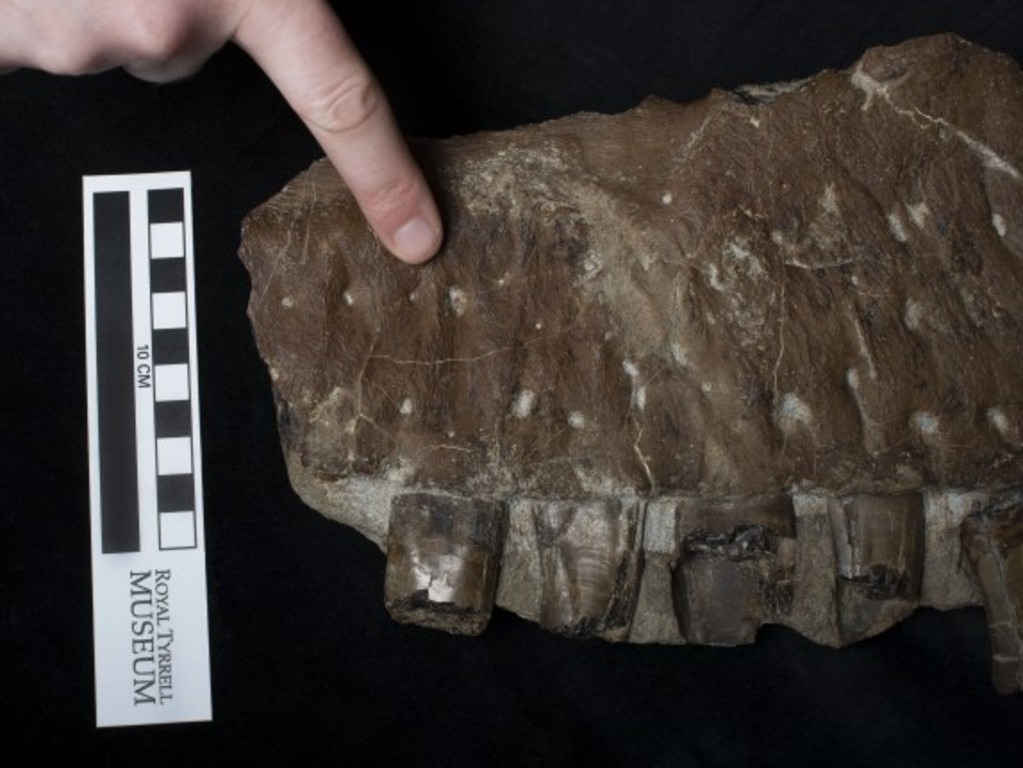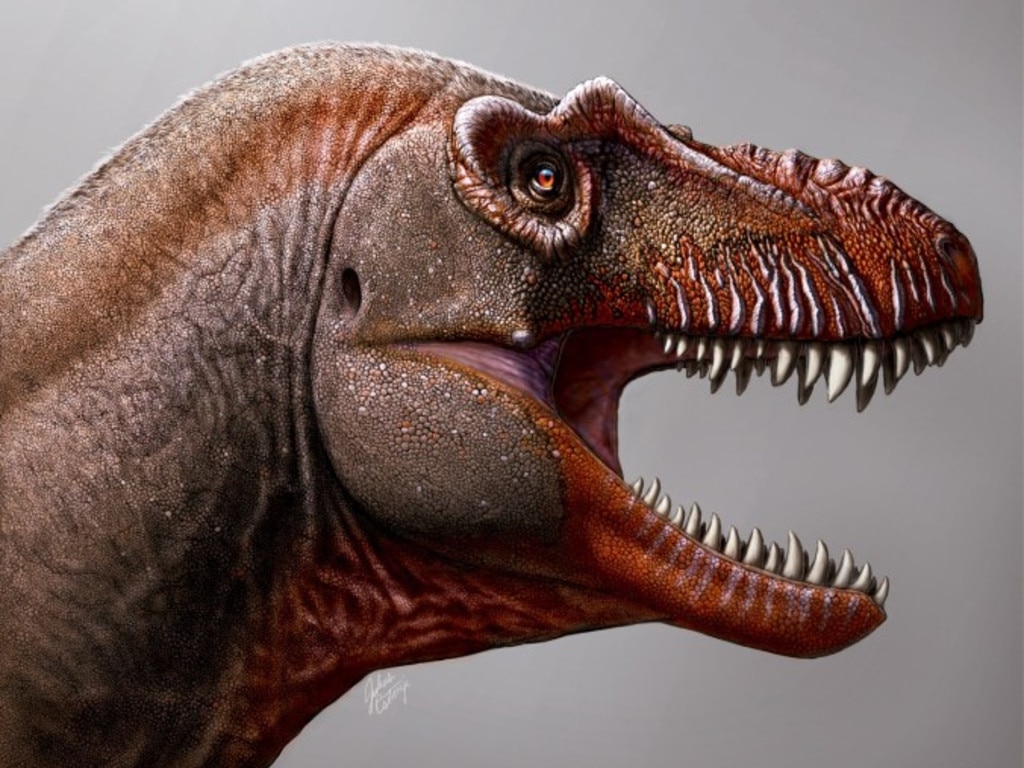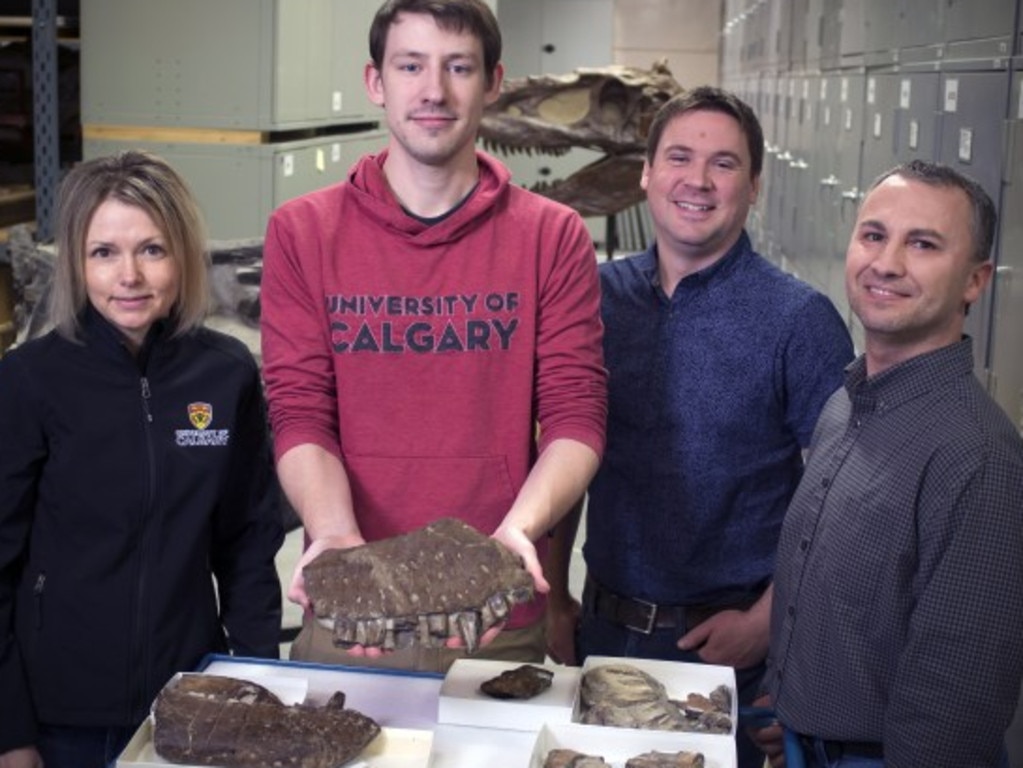Canada’s first new tyrannosaur species discovered in 50 years
A farmer made the “stunning” new tyrannosaur find in Canada. It is the oldest tyrannosaur species ever found in the country.
Palaeontologists have discovered a new species of tyrannosaur in Canada.
Thanatotheristes degrootorum is the oldest tyrannosaur species ever found in the country.
The last tyrannosaur described from Canada was daspletosaurus in 1970.
Tyrannosaurs were a group of large predatory theropod dinosaurs that included the famous tyrannosaurus rex.
Scientists were able to conclude that this is a new, distinct species by analysing the unique features of fossil skull fragments.
“Thanatotheristes can be distinguished from all other tyrannosaurs by numerous characteristics of the skull, but the most prominent are vertical ridges that run the length of the upper jaw,” said Jared Voris, a University of Calgary PhD student, and lead author of the study.


At roughly 79.5 million years old, thanatotheristes is 2.5 million years older than its closest relative.
There are only four other tyrannosaurs known from Canada: daspletosaurus, gorgosaurus, albertosaurus, and tyrannosaurus.
Most dinosaur species from Alberta date from between 66-77 million years old.
There are only two other dinosaurs known from Alberta from the same time period as thanatotheristes: a dome-headed dinosaur (colepiocephale) and a horned dinosaur (xenoceratops).
The name of the new tyrannosaur alludes to its role as an apex predator and was inspired by Thanatos, the Greek god of death, and theristes, one who reaps or harvests.
The second part of the name honours the De Groot family.

John De Groot, a farmer and palaeontology enthusiast, found the fossil skull fragments while hiking near Hays, Alberta.
The jawbone was an absolutely stunning find,” he said.
“We knew it was special because you could clearly see the fossilised teeth.”
John and Sandra De Groot have been valuable supporters of palaeontological fieldwork in southern Alberta.
“John always said that one day he would find a dinosaur skull,” Mrs De Groot said.
“Finding the jaw was exciting. Hearing that it is a new species, and seeing it given our family name, was beyond belief.”
Dr François Therrien, curator of dinosaur palaeoecology at the Royal Tyrrell Museum, said the discovery was significant because it filled in a gap in our understanding of tyrannosaur evolution.
“Thanatotheristes provides scientists with insights into the tyrannosaur family tree, and shows that tyrannosaurs from the Cretaceous of Alberta were more diverse than previously known,” he said.




